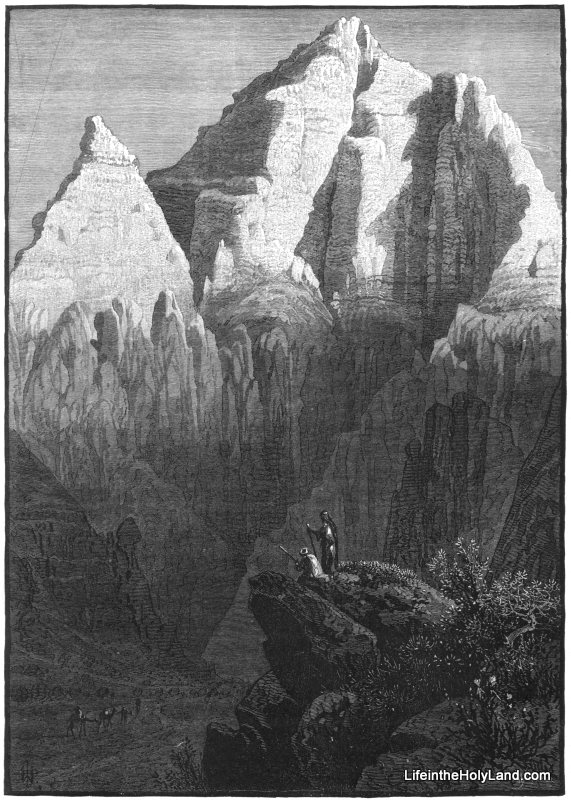(Post by Seth M. Rodriquez)
Our Picture of the Week comes from the Sinai Peninsula: a rugged, mountainous area in eastern Egypt. This region was in the news this week due to violence and unrest in the area related to the political turmoil of the last couple of months. On Tuesday, one reporter stated,
“Sinai is always a bit of a sort of lawless area, but it’s especially that way now. There’s been daily attacks there ever since the takeover by the military from President Morsi six weeks ago. And some of these checkpoints – military checkpoints, police checkpoints – have been shot at 50, 60 times. You can see the bullet holes, you can see the burn marks where grenades have been fired at them.” —Robert Worth, in “Sinai Peninsula Sees Increasing Violence Since Morsi Takeover,” NPR ©2013, http://www.npr.org/templates/story/story.php?storyId=211735488.
The statement that the Sinai Peninsula is a “lawless area” has been an apt description of the region throughout history. It has always been an area that was difficult to control, and often times has been a haven for those who sought refuge from civilization. For example, Elijah sought refuge in this area when he was fleeing from Jezebel (1 Kgs. 19:1-8). Not much has changed from then until now. It is still a relatively desolate place where those who want to avoid authorities can thrive.
A nineteenth century traveler once described the region in the following way:
Through the whole journey in the peninsula, or in the “Desert of the Wanderings,” is noticeable in the clear luminous air the deep silence. The Arabs conducting the distinguished Niebuhr declared that their voices could be heard from shore to shore of the Gulf of ’Akabah. Exaggeration doubtless, but exaggeration of a fact—that in these silent regions the human voice travels a long way. Noticeable also is the fragrance of the Desert. Most of the low shrubs, which seem more dead than alive on one’s stony path, are aromatic. But notice-worthy beyond everything is the desolation and mountain confusion. Most desolate, most barren—for the little oases of verdure we have mentioned are lost out of sight in any general view of the mountains—these hills of Sinai are the “Alps unclothed.” A naked Switzerland, even though its glaciers and snows should remain, seems inconceivable; but Sinai is naked as to any verdure of forest tree, or fir, or pine, or moss, or flowery pasture. Strange lichens grow on the boulders and rocks in some parts, as weird in form as vivid in colouring. Such a path as that which leads up Jebel Katharína is all the world over much the same as a Swiss mountain-path, but the illusion vanishes when one looks for the shade of the trees which beguile the way up a ravine in Switzerland. Then the confusion—the intricate complication of peak and ridge! One traveller (Sir Frederic Henniker) says of the view from Jebel Músa, that it is as if “Arabia Petræa were an ocean of lava, which, whilst its waves were running mountains high, had suddenly stood still.”
The Sinai Peninsula is perhaps best described as a rugged, “in between” place. It’s the perfect setting for those who want to remove themselves from the rest of the world, which makes it a dangerous place for those who are just passing through.
The picture and excerpt are taken from “Sinai” by C. Pickering Clarke in Picturesque Palestine, Sinai, and Egypt, Vol. 4, edited by Charles Wilson (London: J. S. Virtue and Co., 1881; electronic ed. by Todd Bolen, 2004 ). The excerpt can be found on p. 17. This image and an electronic copy of the book is included in Picturesque Palestine, Volume IV: Sinai and Egypt which is available here for $20 (or you can purchase all 4 volumes for $55). More images of the Sinai Peninsula are available on the BiblePlaces website here and here, and on LifeintheHolyLand.com here and here.
